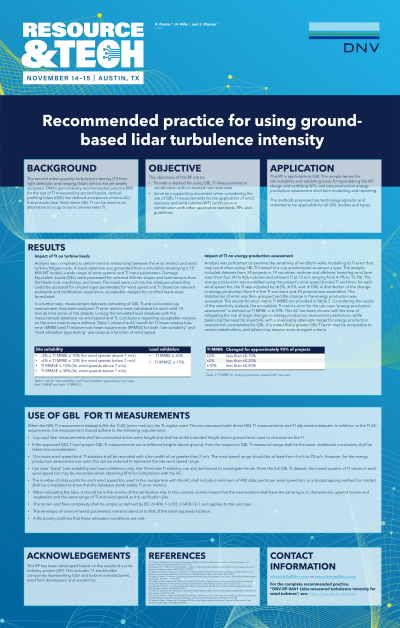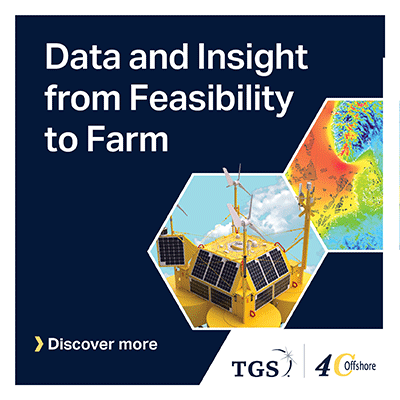Back

Combined Technologies: Measurement Systems
Recommended practice for using ground based lidar TI
Tuesday, November 14, 2023
4:15pm – 5:15pm CST


Reesa Dexter, MSc (she/her/hers)
Senior Energy and Performance Specialist
DNV, Ontario, Canada
Presenter(s)
Presentation Description: Lidars (light detection and ranging) are now commonly used in many wind energy applications as they provide a cost-efficient way of measuring horizontal wind speeds and directions in comparison to conventional anemometers and wind vanes on met masts. The second order quantity turbulence intensity (TI) from lidars are not yet widely accepted, even when a verification met mast is available. This presentation will describe DNV’s joint-industry recommended practice (RP) for the use of TI measured by ground-based vertical profiling lidars (GBL) in wind energy applications. The RP’s main purpose is the definition of acceptance criteria (AC) providing clear limits when GBL TI is used as an alternative to a co-located cup or sonic anemometer TI. The AC employ error metrics to represent the deviation between lidar and met mast TI (cup or sonic anemometry) in a meaningful way. Applicable standards currently based on the use of TI measurements from cup or sonic anemometry. This impedes the application of lidar measured TI. The RP provides a method to accept TI measurements from GBL when validated against a co-located met mast.
Learning Objectives:
- Participants will have a set of acceptance criteria by which to judge if a ground based lidar TI dataset can be used in the application of a wind resource assessment or wind turbine site condition evaluation.

